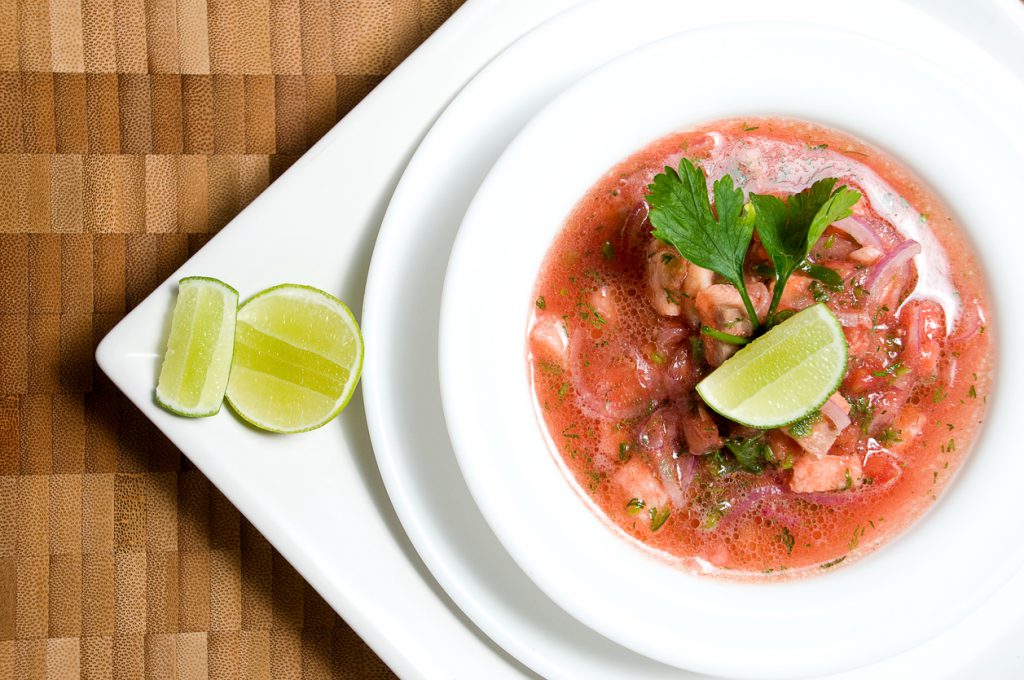In Ecuador, “gastronomic diversity” takes on a new meaning – Ecuadorian cooking features very well-defined contributions from its diverse natural regions – coast, mountain, eastern, and the island region, or Galapagos.
Ecuadorian gastronomy has many elements of autonomous influences, as well as significant contributions from the people who passed through and conquered the country, mainly the Inca and Spanish.
Not only the large, colonising nations left a mark on Ecuador’s cooking, however. As you’ll see in the dishes we talk about below, other cultures have left their mark. Neighbouring Latin American nations have left an unmistakable stamp on some of Ecuador’s most typical and famous dishes.
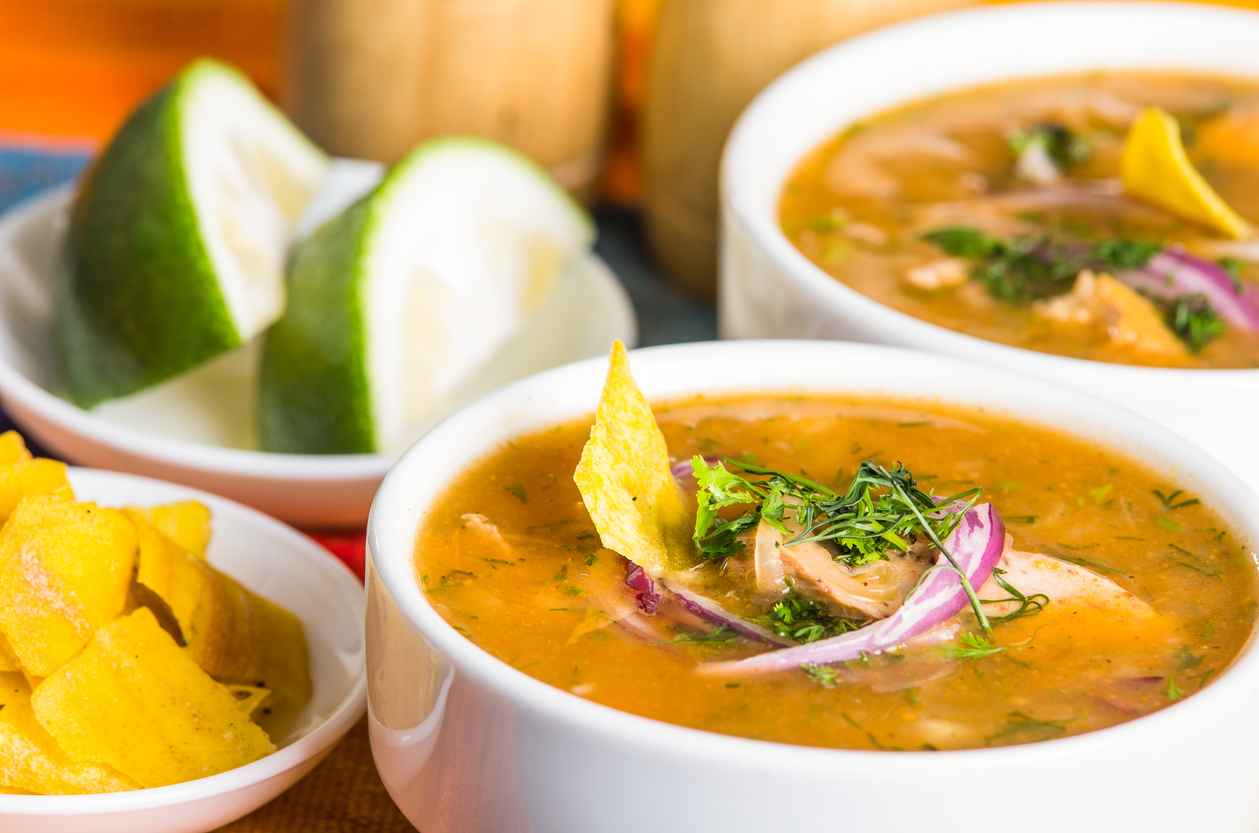
Encebollado (“cooked with onion”) is a good place to start and is a dish that you’ll find at most coastal breakfast tables. It’s a mixture of fish, cassava, and pickled red onion. Bolón verde (“green dumpling”) is another breakfast favourite – it’s plantain dough with flavourings that often include cheese, pork crackling, or even fried meat.
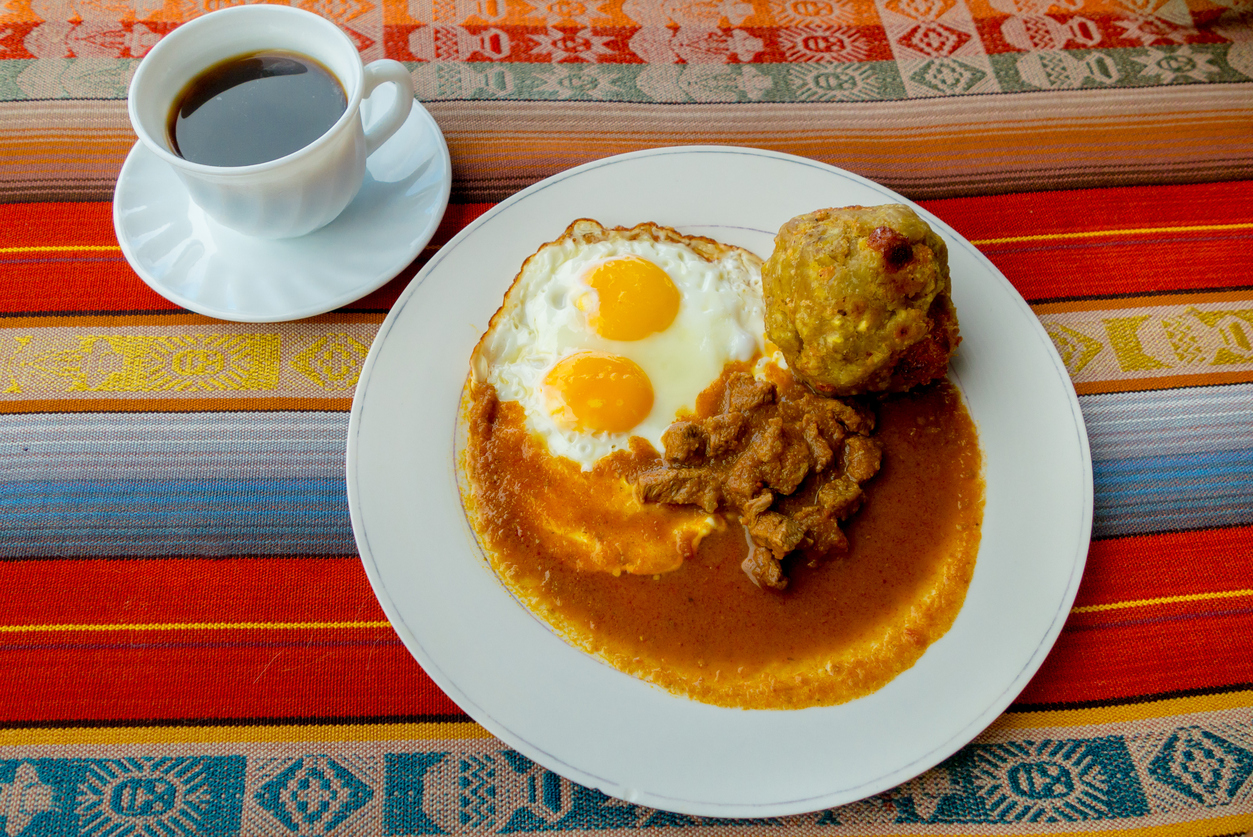
One of the country’s star dishes is roast guinea pig. If you get a glimpse of the creature before it’s killed, you might hesitate before eating it, as it looks so fluffy and cute. It’s a classic mountain dish, however, and is served with boiled corn (mote), potatoes, or as a soup. It’s a special dish that’s served at parties or for special guests.
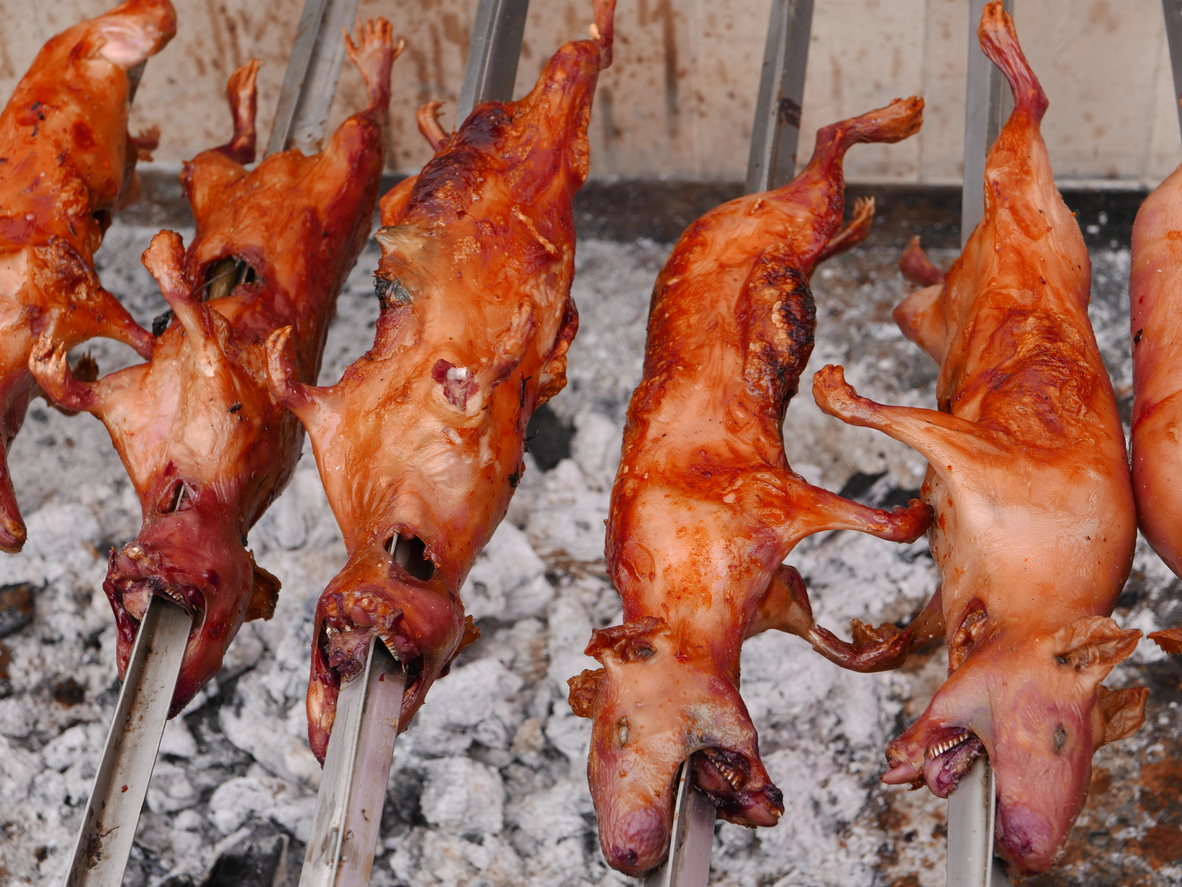
A classic that you’ll find all over the country is fritada (“fried”), a fried pork dish that’s served with roast corn, plantain, boiled corn, or sometimes with popcorn and potatoes. Hornado (“baked”) is another pork dish, but this one’s from the Andes. It’s seasoned with garlic, beer, and cumin, and served with potato cakes, onion salad, and boiled corn.
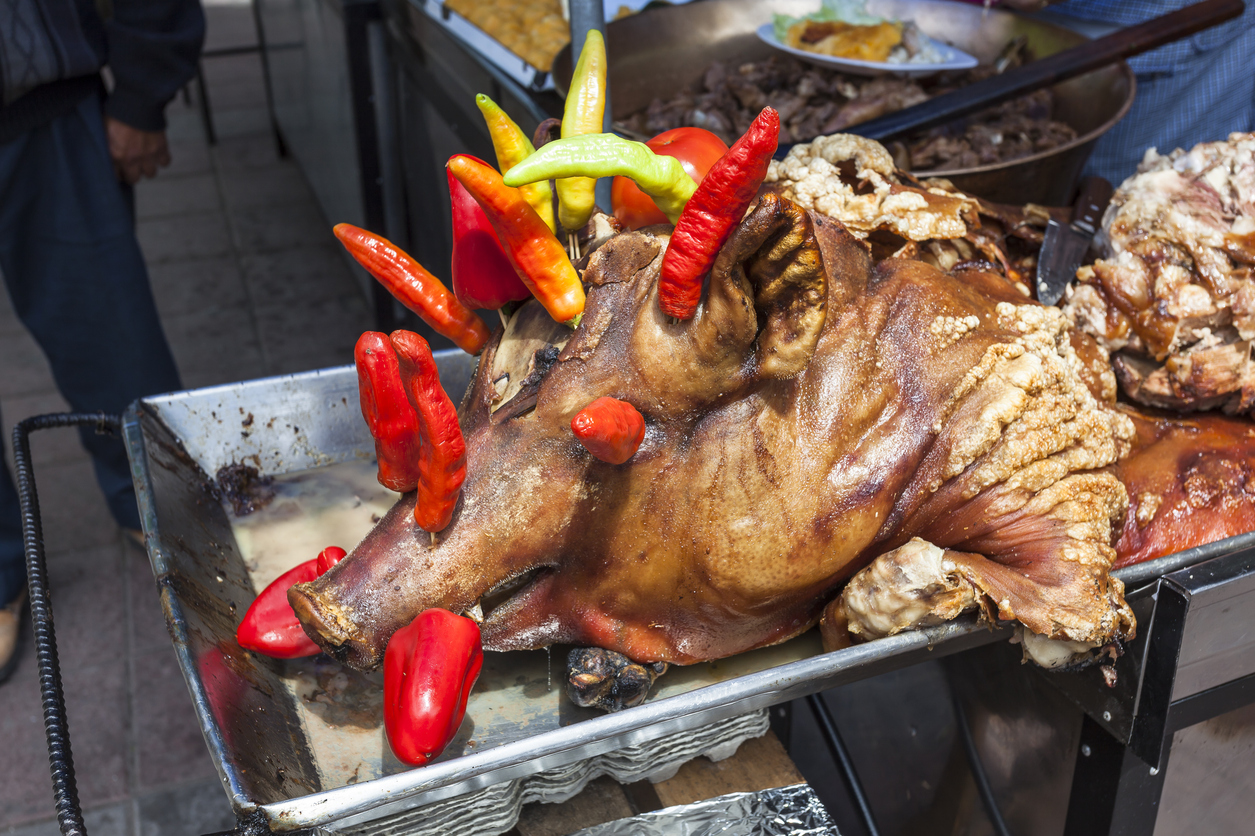
Up next is the Ecuadorian churrasco (grilled meat). This is a typical Latin American dish, but Ecuador takes yet another approach. Filed under stews, we’ve got locro de papa (“potato locro”), a potato soup from the mountains with cheese, avocado, and spicy sauce. Seafood is the star of encocado, a recipe from the coastal region made with coconut milk, fish, and shellfish.
We could highlight much more, but we’re going to end today with guatita (“little belly”), a dish that’s also popular in Peru and Chile. It’s a type of casserole made with tripe and is also known as mondongo. It might not sound great, admittedly, but we guarantee that it tastes great and is really healthy.



